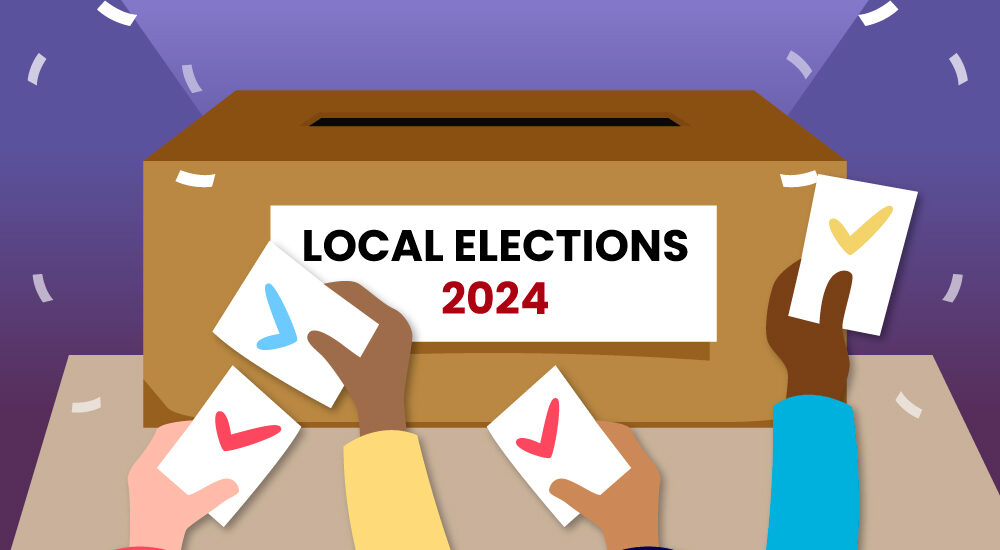- May 8, 2024
- Posted by: lutherpendragon
- Categories: insight, news

The results of the local elections reinforce that the Conservatives are in deep electoral trouble, but just how much do they tell us about a General Election? Consultant Callum Nimmo outlines his thoughts:
The results of the local elections held last Thursday (2nd May) contain little ambiguity: they are very worrying indeed for the Conservatives. While they don’t tell us exactly how the electorate will vote at the next General Election, they contain important clues about the geographic battlelines being drawn, the rise of the independent candidates and third parties, and the national mood.
Here are the key takeaways:
Spread of geographic vote
As the results poured in over the weekend, the most promising sign for Labour was where they won, rather than by how much. To win a Parliamentary majority, the first step for Labour is to broaden its electoral appeal beyond metropolitan areas, where the Party already does well, to regions with a wider distribution of voters across key marginal constituencies.
Perhaps the result which demonstrated this best was the York and North Yorkshire mayoral election, a new mayoralty, which Labour’s David Skaith won convincingly. This is a diverse electoral area, covering rural North Yorkshire and is typically considered a Conservative heartland. Given Labour’s recent by-election win in nearby Selby and Ainsty, this is another sign that the concept of a Conservative ‘safe seat’ is fading and Labour is gaining votes in areas where, historically, the Party would not consider targeting.
When it comes to areas where the Party has historically performed well, the ‘Red Wall,’ the signs are even better, particularly the results in West Midlands and North East – areas with incumbent Conservative MPs on thin majorities that dramatically turned blue in 2019. The East Midlands too saw a Labour candidate, Claire Ward, win the race to become the region’s new Mayor where a number of key seats are also located. Combined with significant council wins in Redditch and Tamworth, it looks very promising for Labour.
Third parties and independents
While broadening its voter coalition is a key objective for Labour, questions have been raised about the impact of independent candidates and third parties on Labour’s core vote. This election saw the Liberal Democrats take 104 Council wards, mostly from the Conseravtives, the Greens made an impressive gain of 79 Councillors, and 93 more Independents were elected.
The Liberal Democrat victories will not worry Labour greatly as, with the exception of a handful of areas such as Sheffield and Hull, Labour and the Lib Dems rarely go head to head. The Lib Dems picking up support in areas where Labour struggle (such as Cheltenham or Tunbridge Wells) can only help reduce the Conservatives’ seat count further – and as happened in 1997, Labour tends to do well when the Lib Dems do. The rise of the Green Party presents a greater challenge to Labour directly, especially in a few key councils. For example, the Greens’ result Bristol, becoming the largest Party on the Council, is particularly concerning given the number of Labour Shadow Ministers with seats in the City. However, Labour’s thinking in terms of how the Green vote could play out in a General Election, save for few specific examples such as in Bristol, is that voters will return to them.
Both the Greens and independent candidates, such as Akhmed Yakoob in the West Midlands, have been profiting from discontent with Labour’s stance on the conflict in Gaza. This set of results reaffirms that the issue of Gaza is ‘in play’, and could present a challenge for Labour to retain its core vote in Muslim areas. However, the extent to which this could be replicated in a General Election, and thereby seriously threaten Labour’s chances of a majority, is an open question. In a mayoral contest, with over 2 million registered electors, Yakoob’s almost 70,000 votes is impressive. But how this extends to an election where each Parliamentary seat has, on average, 80,000 electors, is not clear. The results show there is appetite for vocal pro-Gaza candidates, but outside of a few high-profile contests, it’s hard to see how it can harm Labour’s chances across the board.
Projected national vote share
In response to the results, Rishi Sunak pointed to analysis which suggests the results imply a hung Parliament. This has been near-universally rejected – including by Prof Sir John Curtice who recently visited Luther – for overlooking Scotland and the fact that 20% of voters vote differently in local elections, compared to national. The only silver lining, if you can call it that, is turnout. As 1000s of Tory voters stayed at home, a possible route out for the Conservatives is to get their voters out at a General Election, where evidence suggests they’ll likely stick with the Conservatives.
However, from the PM’s perspective, what else can he say? He must find some glimmer of hope to enthuse Conservative MPs and activists, and talking up the prospect of a hung Parliament, and a Labour coalition, is one that worked in 2015. However, it’s clearly clutching at straws, and Conservative MPs are under no illusion that they are heading to likely defeat. They must now hope for a miracle to reverse what has been set in motion as the window to replace Sunak as PM has long since passed.
